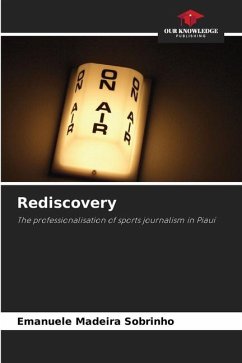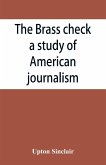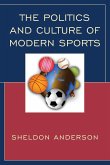Since the 1940s, sports journalism began to take shape in the printed newspapers of Piauí. With the professionalisation of journalism, sports columnists, even without having attended courses, managed to make the period from 1963 to 1983 the most prosperous for the profession. With football gaining the support of political agents, journalists then transformed the sport into a subject for social debate. Through the reports, we can build a panorama of the activity in Piauí based on the municipalities of Teresina and Parnaíba, where local football began. By bringing up the social events, it is possible to see how football, the press and politics established a relationship of complicity. The 'bread and circuses' of Brazilian society during the military dictatorship, where football was the most important and effective instrument in the strategy of social control, and how much the press contributed to this.
Bitte wählen Sie Ihr Anliegen aus.
Rechnungen
Retourenschein anfordern
Bestellstatus
Storno








